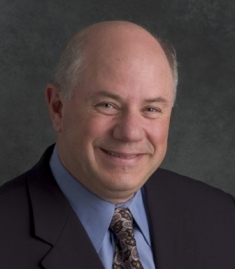Eliyahou Harari: Difference between revisions
No edit summary |
|||
| (9 intermediate revisions by 4 users not shown) | |||
| Line 1: | Line 1: | ||
== | {{Biography | ||
|Image=Harari.jpg | |||
|Associated organizations=SanDisk | |||
|Fields of study=Semiconductors | |||
|Awards=[[IEEE Reynold B. Johnson Data Storage Device Technology Award]]; [[IEEE Robert N. Noyce Medal]] | |||
}} | |||
Chairman and founder of SanDisk, one of the world’s leading [[Semiconductors|semiconductor]] nonvolatile memory companies, Dr. Eli Harari is a recognized leader in flash memory. Dr. Harari’s vision for SanDisk has been to create a revolutionary flash memory technology that would enable low-cost solid-state storage to replace chemical film or rotating magnetic disk drives. | |||
In 1988, embryonic flash memory technology was slow, unreliable and expensive. SanDisk pioneered numerous technological breakthroughs, captured in more than 1500 patents, which systematically overcame these limitations, drove costs down and opened new large-scale markets. The flash chip was re-architected and mated with sophisticated controllers that provided reliable high-speed multiple writes, while multi-level cell (MLC) technology and Moore’s Law lowered costs drastically. SanDisk worked with major competitors to create new industry-standard formats such as the PC Card, CompactFlash, Secure Digital (SD) card, Memory Stick, miniSD and microSD. | |||
Over the past 20 years, flash products brought about the demise of 35mm film due to digital film cards, eliminated tape and CDs in favor of flash-based MP3 players, replaced floppy disks with USB flash drives and will soon gradually supplant DVDs and hard disk drives with flash solid-state disks. Flash has become pervasive and ubiquitous, enabling content on-the-go any time, anywhere—in consumer electronics, mobile phones and industrial/automotive/medical and military devices. | |||
An IEEE member with over 100 patents, Dr. Harari’s contributions have earned him widespread recognition, including the 2006 [[IEEE Reynold B. Johnson Data Storage Device Technology Award|IEEE Reynold B. Johnson Data Storage Device Technology Award]] and the 2009 [[IEEE Robert N. Noyce Medal|IEEE Robert N. Noyce Medal]]. He has served as Chairman and CEO since SanDisk’s inception in 1988, growing the company to over $3 billion in annual revenues. | |||
== See also == | |||
IEEE Milestones: [[Milestones:The_Floating_Gate_EEPROM,_1976_-_1978|The Floating Gate EEPROM, 1976 - 1978]] | |||
{{DEFAULTSORT:Harari}} | |||
[[Category:Flash_memory]] | [[Category:Flash_memory]] | ||
Latest revision as of 13:41, 9 November 2017
- Associated organizations
- SanDisk
- Fields of study
- Semiconductors
- Awards
- IEEE Reynold B. Johnson Data Storage Device Technology Award, IEEE Robert N. Noyce Medal
Biography
Chairman and founder of SanDisk, one of the world’s leading semiconductor nonvolatile memory companies, Dr. Eli Harari is a recognized leader in flash memory. Dr. Harari’s vision for SanDisk has been to create a revolutionary flash memory technology that would enable low-cost solid-state storage to replace chemical film or rotating magnetic disk drives.
In 1988, embryonic flash memory technology was slow, unreliable and expensive. SanDisk pioneered numerous technological breakthroughs, captured in more than 1500 patents, which systematically overcame these limitations, drove costs down and opened new large-scale markets. The flash chip was re-architected and mated with sophisticated controllers that provided reliable high-speed multiple writes, while multi-level cell (MLC) technology and Moore’s Law lowered costs drastically. SanDisk worked with major competitors to create new industry-standard formats such as the PC Card, CompactFlash, Secure Digital (SD) card, Memory Stick, miniSD and microSD.
Over the past 20 years, flash products brought about the demise of 35mm film due to digital film cards, eliminated tape and CDs in favor of flash-based MP3 players, replaced floppy disks with USB flash drives and will soon gradually supplant DVDs and hard disk drives with flash solid-state disks. Flash has become pervasive and ubiquitous, enabling content on-the-go any time, anywhere—in consumer electronics, mobile phones and industrial/automotive/medical and military devices.
An IEEE member with over 100 patents, Dr. Harari’s contributions have earned him widespread recognition, including the 2006 IEEE Reynold B. Johnson Data Storage Device Technology Award and the 2009 IEEE Robert N. Noyce Medal. He has served as Chairman and CEO since SanDisk’s inception in 1988, growing the company to over $3 billion in annual revenues.
See also
IEEE Milestones: The Floating Gate EEPROM, 1976 - 1978
